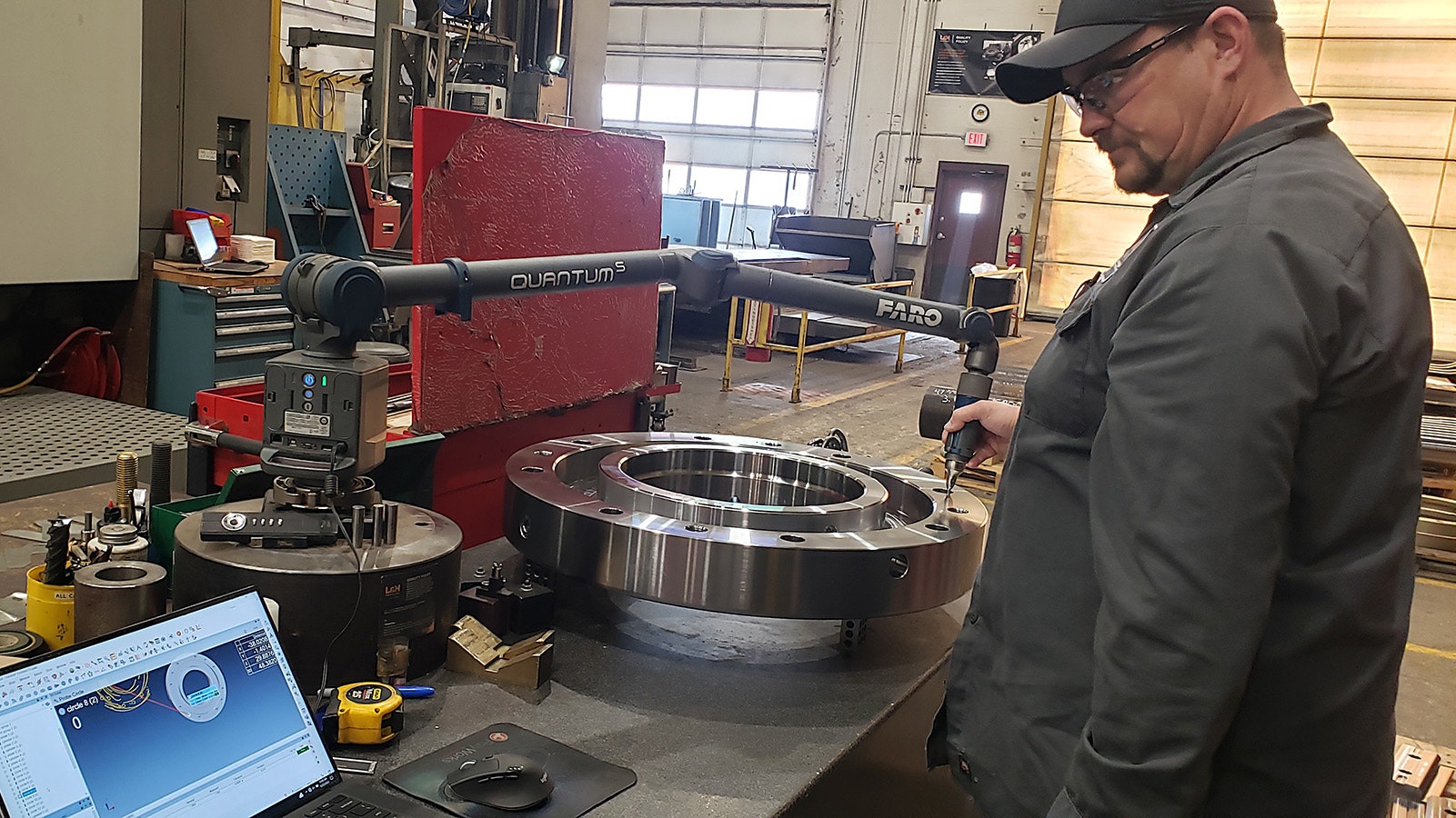Although there are some gaping cracks in the U.S. and Wyoming economies, like rampant inflation and continuing supply chain issues, manufacturing in the Cowboy State has remained steady, ranking third in the nation for growth of that sector.
Recent data released by the federal Bureau of Labor Statistics shows that Wyoming has had the third highest manufacturing growth in the nation by percentage since January 2021 at 10.4%. In total, more than 1,100 manufacturing jobs were added during that time with about 10,600 overall manufacturing jobs in Wyoming now.
Brandi Harlow, northeast regional director for the Wyoming Business Council, said this growth has been consistent in the northwest part of the state, which has become a hotbed for manufacturing in cities like Sheridan and Gillette.
“Overall, in my region it is growing significantly,” she said.
In recent years, companies like Kennon Products and gunmaker Weatherby have set up shop in Sheridan, a community Harlow said has identified manufacturing as a niche industry it can excel in.
Other mainstays like EMIT Technologies, also in Sheridan, and L&H Industrial, which has facilities in Gillette and Sheridan, have provided consistent jobs.
Building On Something
Robert Jensen, Wyoming Government Affairs & Public Relations Director for the Alliance of Wyoming Manufacturers, said manufacturing in the Cowboy State has always been strong.
“It’s always been one of the top five industries in gross domestic product in the state,” he said. “It’s always been at the top not only in numbers, but also the quality of the jobs.”
Jensen said he sees growing manufacturing in Wyoming as key to diversifying Wyoming’s economy, a long-discussed but not always realized goal for the state. Wyoming is dependent on minerals for a significant part of its revenue.
Jensen said many companies have started diversifying into the renewable and nuclear energy sectors.
Rocky Case, director of Manufacturing Works, said the biggest reason behind the manufacturing growth has been from preexisting Wyoming companies diversifying their portfolios into a wider energy umbrella so that they are more protected in leaner and bust years.
The important piece of this is that the companies haven’t been stripping jobs while adding to their traditional base, Jensen said.
“It’s giving manufacturing resources to compete,” he said.
Case said increased automation hasn’t been stealing jobs, but rather adding skills for existing employees.
Harlow also said L&H has been looking at diversifying its portfolio by adding aerospace applications.
Jensen and Mike Wandler, president of L&H, make up some of the leadership of the Wyoming Innovative Entrepreneurs, a group dedicated to finding ways to diversify Wyoming’s economy.
“It’s a robust group focused on manufacturing,” Jensen said.
Partnering With Minerals
Jensen and state Sen. Dan Dockstader, R-Afton, chairman of the Minerals, Business and Economic Development Committee, said manufacturing can support and work hand-in-hand with energy if managed correctly.
Jensen pointed to the state’s growing trona mining production while Dockstader mentioned the TerraPower advanced nuclear reactor planned for Kemmerer. Both are located in the southwestern region of the state and rely on a significant amount of manufacturing support.
Dockstader has requested the University of Wyoming to perform a study to see how many jobs energy and manufacturing can provide to communities around the state for the goal of striking a perfect balance between the two industries.
“We want to know what manufacturing and minerals-based economies do for the community,” Dockstader said. “It’s all about fighting for the same people.”
Still Some Concerns
The U.S. economy has added around 800,000 manufacturing jobs nationwide since Jan. 1, 2021, with some of the largest gains seen in the South and West. American manufacturing growth started outpacing the rest of the world’s growth at the end of 2022 for the first time in any recent year.
But despite these signs of growth, manufacturing gains have trailed the overall increase in employment, about 9.3%, as other sectors have experienced a more rapid rebound.
Growth in the manufacturing sector also has plateaued nationally since January, with virtually no jobs added while 1.2 million other jobs were created since that time.
Harlow said workforce housing issues are still a major hurdle for the manufacturing industry, particularly in Gillette where a booming oil market often leads to higher costs. In 2022, the city of Sheridan established a Housing Land Trust to address affordable housing.
Jensen also has concerns about attempts to implement tax hikes on his industry.
“What we really don’t want to do is kill that momentum,” he said.
Over the years, there have been various attempts to remove a sales tax exemption for companies adding manufacturing equipment in Wyoming by those who believe the exemption is a “giveaway,” Jensen said.
“It’s really not a giveaway,”he said. “It’s a primary investment into one of the premier jobs in the state.”
Leo Wolfson can be reached at leo@cowboystatedaily.com.





